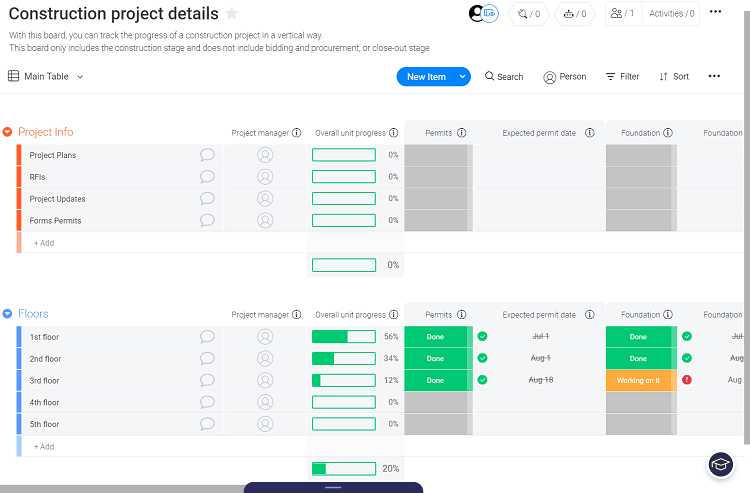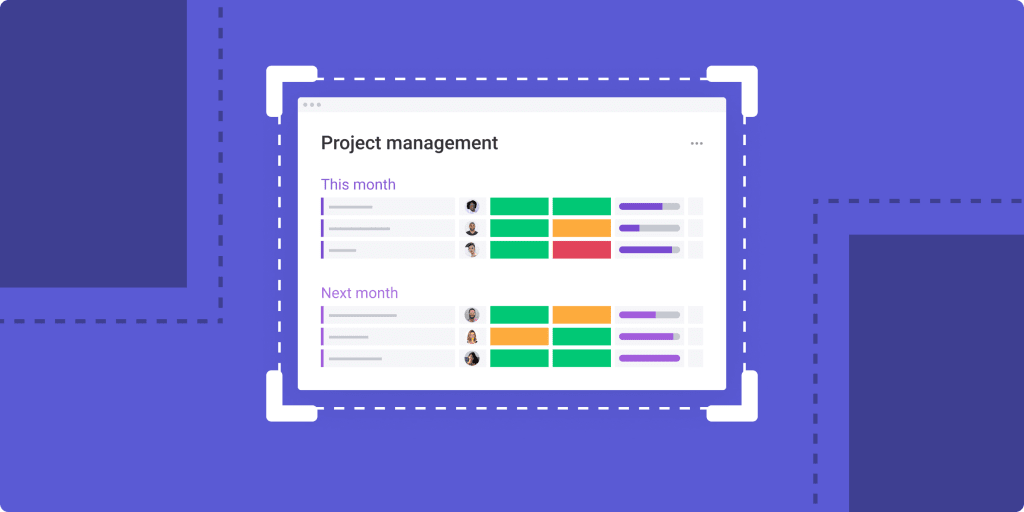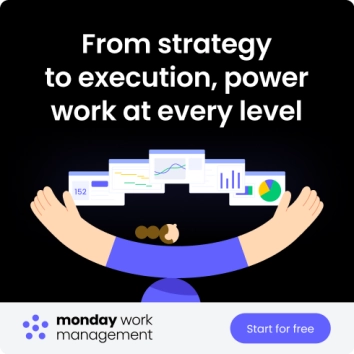Have you ever launched head-first into a new project without a clear plan? In today’s world, it’s tempting to dive right in and hope for the best. But as the saying goes, hope is not a strategy. Taking the time to create a project outline first doesn’t just feel responsible—it’s scientifically proven to increase your chances of success.
Studies show that thorough planning is one of the most significant contributing factors to project success. Yet, a large number of projects still fail to meet their original goals. Before you launch full-speed into your next initiative, setting aside time to create a high-level project outline is the most important first step you can take.
This guide will walk you through what a project outline is, why it’s essential, and how to create one that sets you up for success. We’ll also show you how to use monday.com to turn your outline into a dynamic and actionable project management plan.
TL;DR: A project outline is a high-level blueprint that defines a project’s goals, scope, timeline, and resources. Creating one before you start is crucial for aligning teams, anticipating obstacles, and ensuring everyone is working towards the same definition of success.
What is a project outline?
A project outline is the blueprint of your project. It’s a high-level overview of how you expect the project to play out as work progresses, describing how you intend to satisfy deliverables, who’s on the team, and what resources you’ll need. Think of it as the skeleton that your more detailed project plan will be built upon.
You can split your outline into logical phases, then break them down into major tasks to give a clear picture of all the work involved. It should cover the full project scope, from the initial kickoff meeting to the final deliverable. And no project outline is complete without anticipated timeframes and key milestones. It’s also important not to confuse a project outline with a project proposal. The proposal makes the business case for *why* a project is necessary, while the outline explains *how* the work will get done.
Why is a project outline essential for success?
Research consistently shows that the depth of project planning correlates directly with project success. In fact, recent surveys from the Project Management Institute (PMI) reveal that poor upfront planning and inadequate vision are among the chief causes of project failure. When you create a project outline, you are creating a single source of truth for the entire project.
Your team and stakeholders have a clear roadmap showing both the destination and the journey needed to get there. This formal document also commits team members to the process and builds momentum as you begin to track progress against the outlined goals. With a tool like monday.com, you can easily turn your outline into a visual project tracker to measure progress and keep everyone aligned.

What are the key components of a project outline?
A comprehensive project outline should include several key components to ensure everyone is on the same page. While the level of detail can vary, every effective outline should cover these core elements:
- Project Goals and Objectives: Clearly state what the project aims to achieve and the specific, measurable outcomes you’re working towards.
- Scope Statement: Define the project’s boundaries, including what is and is not part of the project. This prevents scope creep later on.
- Key Deliverables: List the main tangible outputs that will be produced by the end of the project.
- Timeline and Milestones: Create a high-level project timeline with start dates, end dates, and major milestones to mark significant progress points.
- Stakeholder List: Identify all key stakeholders, including the project team, customers, and sponsors, and define their roles and responsibilities.
- Resource Allocation: Outline the necessary resources, including team members, tools, and software needed to complete the project.
- Budget Overview: Provide a high-level summary of the estimated project costs and how the budget will be allocated.
How to write a project outline in 5 simple steps
To create your project outline, you need to gather the right information. The classic 5Ws framework—Who, What, When, Where, and Why—is an excellent method for constructing the skeleton of your project. We’ve reframed it into an actionable, step-by-step process.
Step 1: Define your project goals and objectives (The “Why”)
Before anything else, understand why this project is important. What business goal does it support? Answering this question ensures the project has a clear purpose and should take priority over other initiatives on your to-do list.
Step 2: Identify the scope and deliverables (The “What”)
Clearly define the project’s aim and what it needs to deliver. What does success look like, and how will you measure it? List the key deliverables and the criteria that will be used to approve them. This clarity is critical, as only 44% of projects are likely to deliver on their initial stated goals.
Step 3: Determine the timeline and key milestones (The “When”)
Establish a realistic start and end date for the project. With only 30% of organizations delivering projects on time, setting achievable timeframes is vital. Break the timeline down with significant milestones to track progress along the way.
Step 4: Assign stakeholders and team members (The “Who”)
Identify everyone involved. Who is the customer? Who are the key stakeholders whose interests will be affected? And which team members are essential for the project’s success? Defining these roles early helps build support and ensures everyone is invested from the start.
Step 5: Outline required resources and budget (The “How”)
List the hardware, software, and other resources you’ll need to get the job done. This includes everything from office space to specific tools for communication, design, and development. Don’t forget to consider existing organizational intelligence or assets from similar past projects that could increase your chances of success. If you need to brainstorm with your team, you can use a collaborative tool like monday.com’s Whiteboard to map everything out.

Project outline example and template
Once you’ve gathered all the main points, it’s time to formalize your project outline. Instead of a static document, using a dynamic Work OS like monday.com allows you to craft a visually appealing and practical outline that can evolve with your project. To save you time, we have plenty of customizable templates you can use as a starting point. The High-Level Project Plan template is ideal for outlining a project.
You can start by mapping out the major phases and tasks on a week-by-week basis. From there, you can assign ownership, set dependencies so work is done in the correct order, and visualize your project in multiple ways, including Gantt, Timeline, and Kanban views.
Bring your project outline to life. Stop planning in static documents. Build a dynamic, collaborative project outline with monday.com’s ready-to-use template.
How to create a project outline faster with AI in monday.com
You can accelerate your planning process even further by leveraging artificial intelligence. The monday.com AI Assistant, built directly into the Work OS, can help you draft a comprehensive project outline in a fraction of the time. It’s designed to handle the grunt work so you can focus on strategy.
Here’s how you can use it:
- Generate tasks from goals: Simply describe your project’s main objective, and the AI Assistant can suggest a list of relevant tasks and action items to include in your outline.
- Summarize project briefs: Have a long document or email chain discussing the project? Use the Summarize AI Block to instantly extract the key points, goals, and requirements.
- Draft initial sections: Use the AI Assistant to write first drafts of your scope statement, define objectives, or even outline a communication plan based on a simple prompt.
By integrating AI into your workflow, you can create a more thorough and well-structured outline while saving valuable time.
Best practices for a bullet-proof outline
Creating the outline is just the beginning. To make it truly effective, follow these best practices:
- Keep it high-level but comprehensive: The outline shouldn’t get lost in minor details. It should be easy to understand at a glance, but detailed enough to cover all critical project components.
- Collaborate with your team: Don’t create the outline in a silo. Involve key team members and stakeholders in the planning phase to gain valuable input and ensure buy-in from everyone involved.
- Review and revise as needed: A project outline is a living document. Be prepared to revisit and adjust it as the project evolves, priorities shift, or new information becomes available.
Start your next project with a clear outline
Don’t let your next project be the one that goes over budget, misses its deadline, or fails to meet objectives. Increase your chances of success by creating a clear, comprehensive project outline first. By using a framework to understand what you need to do and formalizing it in a flexible Work OS like monday.com, you can build a solid foundation for execution.
Ready to get outlining? Start with our High-Level Project Plan template to organize, track, and execute your next project with confidence.
Don’t miss more quality content!

